- News
- Reviews
- Bikes
- Accessories
- Accessories - misc
- Computer mounts
- Bags
- Bar ends
- Bike bags & cases
- Bottle cages
- Bottles
- Cameras
- Car racks
- Child seats
- Computers
- Glasses
- GPS units
- Helmets
- Lights - front
- Lights - rear
- Lights - sets
- Locks
- Mirrors
- Mudguards
- Racks
- Pumps & CO2 inflators
- Puncture kits
- Reflectives
- Smart watches
- Stands and racks
- Trailers
- Clothing
- Components
- Bar tape & grips
- Bottom brackets
- Brake & gear cables
- Brake & STI levers
- Brake pads & spares
- Brakes
- Cassettes & freewheels
- Chains
- Chainsets & chainrings
- Derailleurs - front
- Derailleurs - rear
- Forks
- Gear levers & shifters
- Groupsets
- Handlebars & extensions
- Headsets
- Hubs
- Inner tubes
- Pedals
- Quick releases & skewers
- Saddles
- Seatposts
- Stems
- Wheels
- Tyres
- Health, fitness and nutrition
- Tools and workshop
- Miscellaneous
- Tubeless valves
- Buyers Guides
- Features
- Forum
- Recommends
- Podcast
feature
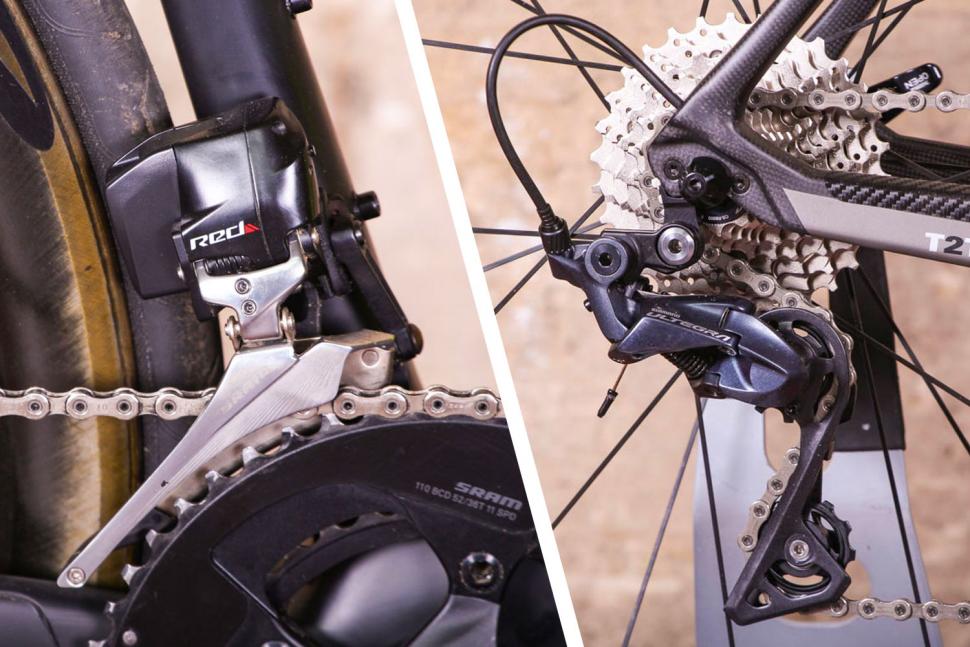 Beginners guide to gears Sept 2018
Beginners guide to gears Sept 2018Bike gears: find out why bikes have so many, and the surprising way they're measured
I still feel that variable gears are only for people over forty-five. Isn't it better to triumph by the strength of your muscles than by the artifice of a derailleur? We are getting soft... As for me, give me a fixed gear!
—Tour de France founder Henri Desgrange
Your gears do a simple but vital job, varying the speed the rear wheel turns for a given pedalling speed. But how do you choose the right gearing for you? And how many gears do you really need?
One way or another the clever, delicate mechanism of bike gears has always been a source of controversy. Henri Desgrange, editor of Le Velo, the sports newspaper that organised the first Tour de France was not a fan, as the quote above shows. Every time component makers add another sprocket, cycling forums erupt with complaints about increasing complexity and forced obsolescence. Off-road, though, mountain bike gear systems have been driven toward simplicity, with a movement in recent years toward fewer total gears not more.
But why do we need gears anyway? What’s wrong with conquering hills “by the strength of your muscles” Desgrange-style?
The answer comes from evolutionary biology. Early humans were 'persistence hunters' pursuing their prey till it was exhausted. We didn’t have a jaguar’s ambush ability or the sprint of a cheetah, so we relied on the endurance that today lets us run marathons and ride centuries.
That means we evolved to produce a steady effort for a long time, at a fairly narrow range of power. Gears allow us to take that narrow power band and turn it into a wide range of speeds suitable for everything from grinding climbs to whooping descents.
Mechanically, the principal is simple. If one sprocket drives another via a chain, the speed of the driven sprocket comes from the ratio of the sizes. A 48-tooth large sprocket driving a 12-tooth small one gives a 4:1 gear ratio.
Working out the ratios of all your gears would tell you which were bigger and smaller, which is easier than trying to remember whether 53/16 is bigger 39/12. But you do end up with a load of very similar-looking decimal fractions.
Here’s a typical race bike gear set expressed as ratios.
| 11 | 12 | 13 | 14 | 15 | 16 | 17 | 19 | 21 | 23 | 25 | |
| 53 | 4.82 | 4.42 | 4.08 | 3.79 | 3.53 | 3.31 | 3.12 | 2.79 | 2.52 | 2.30 | 2.12 |
| 39 | 3.55 | 3.25 | 3.00 | 2.79 | 2.60 | 2.44 | 2.29 | 2.05 | 1.86 | 1.70 | 1.56 |
There are two ways of turning that ugly set of decimals into friendlier numbers. On the Continent, gears are expressed in metres of ‘development’, the distance travelled for one turn of the pedals. Here’s that gear set for a standard 700C wheel with a 25mm tyre. It yields numbers that at least have a real-world meaning, but that are still messy decimals.
| 11 | 12 | 13 | 14 | 15 | 16 | 17 | 19 | 21 | 23 | 25 | |
| 53 | 10.17 | 9.32 | 8.60 | 7.99 | 7.46 | 6.99 | 6.58 | 5.89 | 5.33 | 4.86 | 4.47 |
| 39 | 7.48 | 6.86 | 6.33 | 5.88 | 5.49 | 5.14 | 4.84 | 4.33 | 3.92 | 3.58 | 3.29 |
The alternative, still used by gear nerds in the English-speaking world, is ‘gear inches’. Here’s our race gearing chart again, in inches.
| 11 | 12 | 13 | 14 | 15 | 16 | 17 | 19 | 21 | 23 | 25 | |
| 53 | 130 | 119 | 110 | 102 | 95 | 89 | 84 | 75 | 68 | 62 | 57 |
| 39 | 96 | 88 | 81 | 75 | 70 | 66 | 62 | 55 | 50 | 46 | 42 |
Wormelow Tump (noun): Any seventeen-year-old who doesn't know about anything at all in the world other than bicycle gears.
— The Meaning of Liff by Douglas Adams and John Lloyd
You’re probably wondering where these numbers come from. The answer requires a bit of cycling history.
(CC BY-NC 2.0 Rachel Wray/Flickr)
Before bikes had equal-sized wheels and chain drives, the world of cycling was ruled by high-wheelers, the bikes often referred to as ‘penny-farthings’. Because the pedals drove the wheel directly, the gear of a high-wheeler was determined by its size.
The larger a wheel you had, the faster you could go, so riders used the largest wheel that allowed them to reach the pedals. This being Victorian England they expressed the wheel diameter in inches.
To calculate a gear in inches you multiply the raw gear ratio by the wheel diameter. That gives you the size of a high-wheeler with the same gear. Accuracy to a single inch is all that’s needed so they’re rounded.
In keeping with tradition, the nominal wheel diameter used for road bike gear inches calculations is 27in.
Gear inches give you nice, easy-to-handle numbers and I’ve a soft spot for their quaint Englishness, so that’s what we’ll use through the rest of this article.
If you want to take gear nerdiness a step further, check out this article by the late, great bicycle sage Sheldon Brown, which proposes a system for expressing gears that takes into account crank length too.
To give you some idea of what typical numbers in gear inches translate to in the real world, at a cadence of 90 rpm, the lowest gear, 42-inch, gear on our race bike will see you doing 11mph. In a 66-inch gear, you’ll be cruising along at just under 18mph, and in the top, 130-inch gear you’ll still be able to keep up with the pedals at 35mph.
Gear range & steps
The difference between the highest and lowest gears is referred to as the gear range. As you can see from our example, racing cyclists use gear set-ups with an emphasis on high gears and a relatively narrow range.
That also means the steps between gears are close. Racers like that because they can pick exactly the right gear that lets them pedal at the cadence at which they’re most comfortable and efficient, and they’re fit enough that the lack of lower gears isn’t an issue until the road gets insanely steep.
For less serious riders, gear range is probably more important. How low a gear do you need? How high?
Let’s take a look at the gear ranges you get with some typical gear set-ups.
The lower gear range you get from a compact chainset is why they have become so popular in the last decade.
| 11 | 12 | 13 | 14 | 15 | 16 | 17 | 19 | 21 | 23 | 25 | |
| 50 | 123 | 113 | 104 | 96 | 90 | 84 | 79 | 71 | 64 | 59 | 54 |
| 34 | 83 | 77 | 71 | 66 | 61 | 57 | 54 | 48 | 44 | 40 | 37 |
Throw in a slightly wider range at back at things look like this:
| 11 | 12 | 13 | 14 | 15 | 17 | 19 | 21 | 23 | 25 | 28 | |
| 50 | 123 | 113 | 104 | 96 | 90 | 79 | 71 | 64 | 59 | 54 | 48 |
| 34 | 83 | 77 | 71 | 66 | 61 | 54 | 48 | 44 | 40 | 37 | 33 |
With its WiFli transmissions, SRAM has taken this to its logical conclusion, combining a compact chainset with a very wide range cassette.
| 11 | 12 | 13 | 15 | 17 | 19 | 22 | 25 | 28 | 32 | 36 | |
| 50 | 123 | 113 | 104 | 90 | 79 | 71 | 61 | 54 | 48 | 42 | 38 |
| 34 | 83 | 77 | 71 | 61 | 54 | 48 | 42 | 37 | 33 | 29 | 26 |
Alternatives
It’s relatively rare to find anything but a double chainset on an off-the-peg road bike, but bike makers still offer triples on touring bikes, hybrids and a few road bikes. Taking ideas from mountain bikes, some makers of cyclocross bikes and gravel road/adventure bikes are using single chainrings.
The advantage of a triple is that, done right, it can provide a very wide gear range with small gaps between ratios. The disadvantage is that even with the best indexed gears it can be a struggle to have the shift to the middle ring and down to the inner ring work perfectly.
Here’s a typical road bike triple set-up, as you’d get with a Tiagra triple chainset and 10-speed cassette.
| 11 | 12 | 14 | 16 | 18 | 20 | 22 | 25 | 28 | 32 | |
| 50 | 123 | 113 | 96 | 84 | 75 | 68 | 61 | 54 | 48 | 42 |
| 39 | 96 | 88 | 75 | 66 | 59 | 53 | 48 | 42 | 38 | 33 |
| 30 | 74 | 68 | 58 | 51 | 45 | 41 | 37 | 32 | 29 | 25 |
Compare that with WiFli gearing or even a standard compact and fairly wide cassette and one thing is obvious: you don’t get a much lower bottom gear for the extra complexity.
However, use the right components and you can go much lower. Here’s the gearing on a Dawes Super Galaxy tourer, which uses a Deore XT chainset intended for European 'trekking' bikes:
| 11 | 13 | 15 | 17 | 19 | 21 | 23 | 26 | 30 | 34 | |
| 46 | 113 | 96 | 83 | 73 | 65 | 59 | 54 | 48 | 41 | 37 |
| 36 | 88 | 75 | 65 | 57 | 51 | 46 | 42 | 37 | 32 | 29 |
| 26 | 64 | 54 | 47 | 41 | 37 | 33 | 31 | 27 | 23 | 21 |
If you’re carrying a heavy load or riding in very hilly terrain — or both — that 21-inch gear low gear will let you winch up just about anything.
It's not usual for gear freaks to custom-blend set ups that go lower still. My tandem has an 18in low gear, provided by a 20-tooth chainring and a 30-tooth sprocket.
One ring to rule them all
Single chainrings have become popular among mountain bikers for their simplicity. You can’t fluff a shift if there’s no shifting at the chainring. Racers like not having to think about front shifting, while for recreational riders who have adopted height-adjustable seatposts it declutters the handlebar.
Chainrings for double and triple cranksets are designed to make it easy for the chain to come off, so it can move to the next ring. That makes them unsuitable for use as a single rings. Chainrings with different teeth shapes, known as thick/thin rings, help solve this problem, combined with a rear derailleur that includes a clutch to stop the lower run of chain going slack.
To get a wide spread of gears, single ring systems use 10 or 11 sprockets ranging in size from tiny to huge, as you can see in the above pic. Here’s a SRAM 1X spread:
| 10 | 12 | 14 | 16 | 18 | 21 | 24 | 28 | 32 | 36 | 42 | |
| 44 | 119 | 99 | 85 | 74 | 66 | 57 | 50 | 42 | 37 | 33 | 28 |
The price for simplicity is that compared to other ways of getting a wide gear range there are some big gaps in there. The middle sprockets do give you a useful selection of ratios for general riding though.
If you want to play further with gear ratios and their effect on speed and cadence, there’s a great tool at gear-calculator.com
And if you've made it all the way down here, you deserve this kind of tripel:
Tripel (CC BY 2.0 Bernt Rostad/Flickr)
John has been writing about bikes and cycling for over 30 years since discovering that people were mug enough to pay him for it rather than expecting him to do an honest day's work.
He was heavily involved in the mountain bike boom of the late 1980s as a racer, team manager and race promoter, and that led to writing for Mountain Biking UK magazine shortly after its inception. He got the gig by phoning up the editor and telling him the magazine was rubbish and he could do better. Rather than telling him to get lost, MBUK editor Tym Manley called John’s bluff and the rest is history.
Since then he has worked on MTB Pro magazine and was editor of Maximum Mountain Bike and Australian Mountain Bike magazines, before switching to the web in 2000 to work for CyclingNews.com. Along with road.cc founder Tony Farrelly, John was on the launch team for BikeRadar.com and subsequently became editor in chief of Future Publishing’s group of cycling magazines and websites, including Cycling Plus, MBUK, What Mountain Bike and Procycling.
John has also written for Cyclist magazine, edited the BikeMagic website and was founding editor of TotalWomensCycling.com before handing over to someone far more representative of the site's main audience.
He joined road.cc in 2013. He lives in Cambridge where the lack of hills is more than made up for by the headwinds.
Latest Comments
- Jogle 2 min 50 sec ago
Steve Coogan avoids driving ban after plea to save new TV show The Trip with Rob Brydon...
- mctrials23 3 min 28 sec ago
Paint isn't protection. Paint is worse than nothing at all and every cyclist knows it. I get passed far too close at the ratio of 10:1 if not worse...
- mctrials23 5 min 25 sec ago
I mean, fucking hell. Everything about this screams angry scumbag that should be in prison for some time and should have his license taken away. He...
- Pub bike 21 min 7 sec ago
Nothing a splash of Fenwick's couldn't deal with.
- MR P H SMITH 23 min 12 sec ago
@mtbtomo We're stoppping at Fodele Beach this Summer! I trust it was a good hotel? Moreover, I've booked my bike and would love to know if you have...
- Rendel Harris 24 min 48 sec ago
If you have lost height it will almost certainly be due to ageing curvature/compression of the spine, it's highly unlikely that your legs have got...
- mdavidford 55 min 36 sec ago
And that's before you get on to the confusing business of taking the new monthly cost and converting it to an annual one, and then comparing it...
- Mr Anderson 1 hour 20 min ago
Looking on Google Maps of the location of this company, reminded me of an episode of Lovejoy. The story line was thieves from France were...
- chrisonabike 1 hour 21 min ago
You may live in a place where 30s away from your locked bike is enough to see it gone or at least piranha'd. If so, my sympathies... In Edinburgh...
- Condor Andy 1 hour 30 min ago
Not sure I've seen a transfer fantasy game anywhere else. It's why a lot of people I've spoken to stopped playing this game, it was just too time...

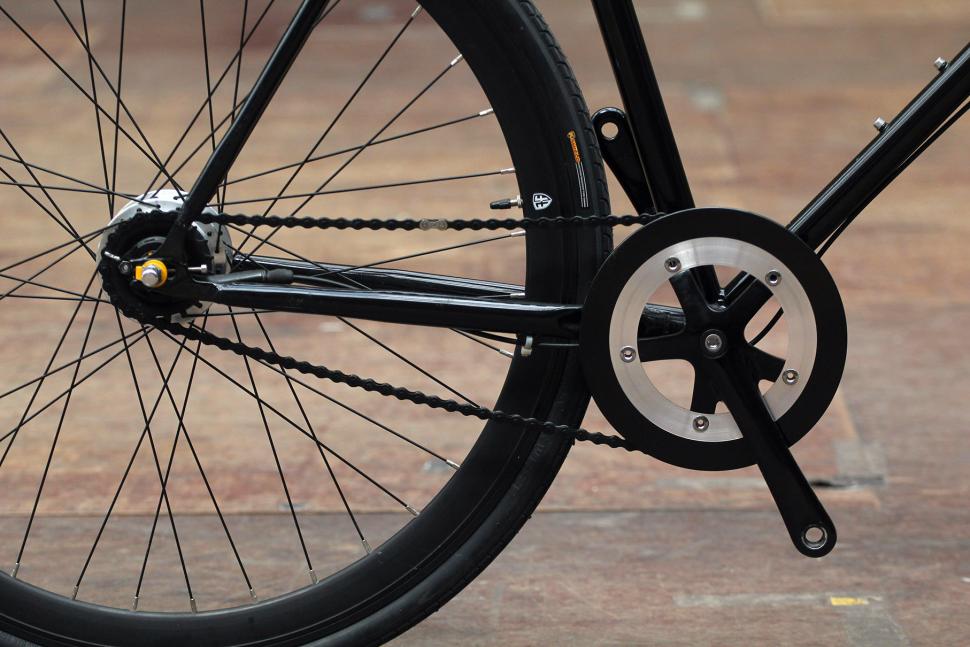
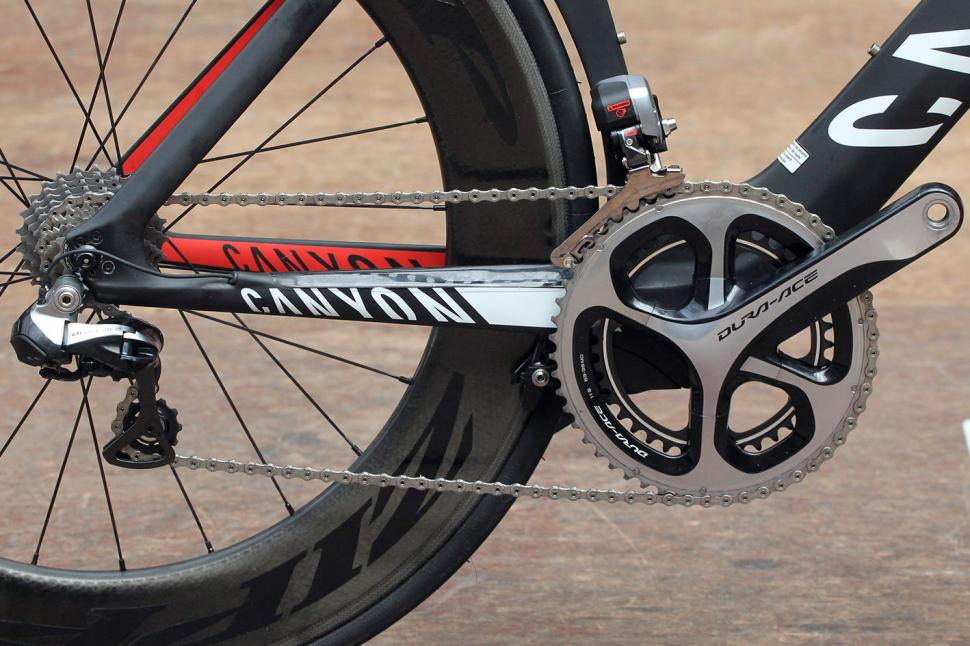
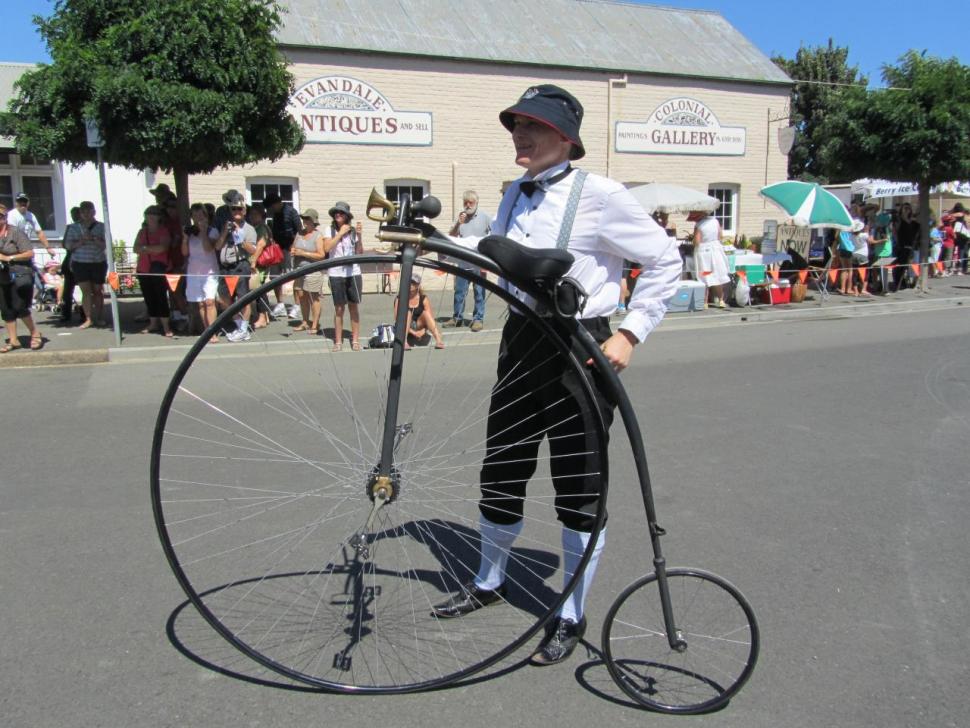
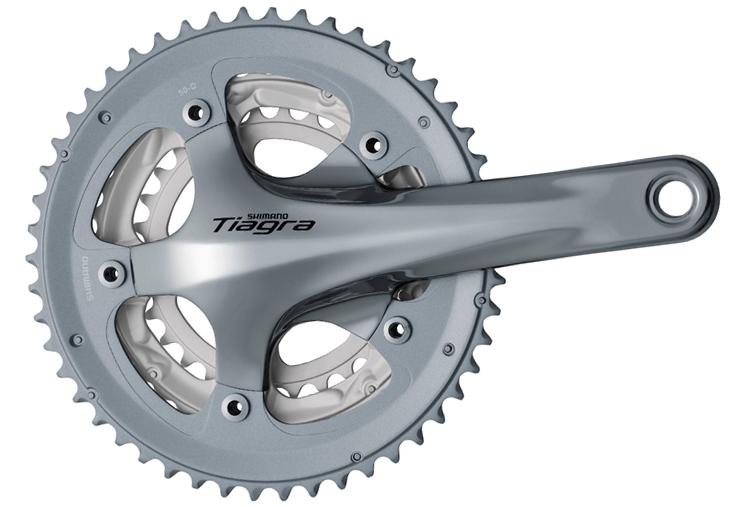
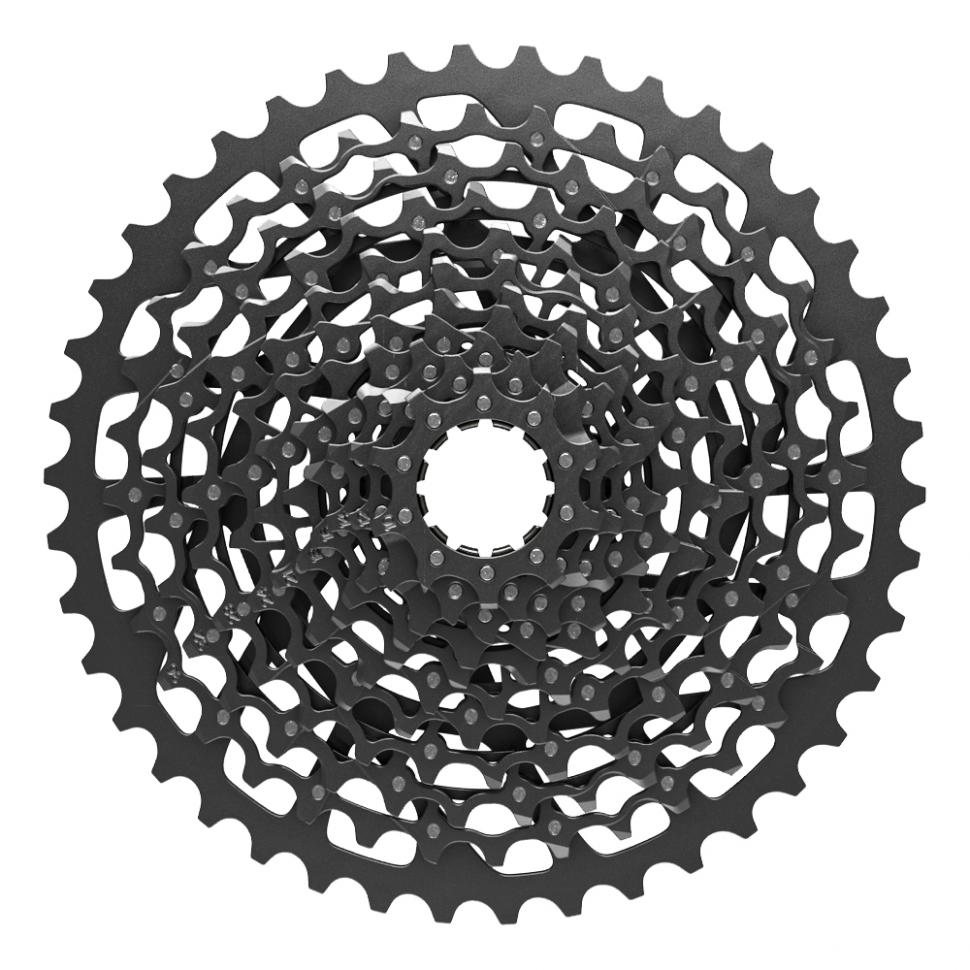

Add new comment
29 comments
I wonder how long it will be til we see an indoor specific gear set. On Wahoo Kickr/Zwift I use a very narrow range of gears, rarely the small chainring (presumably due to the default 50% trainer difficulty or whatever it is).
A 1x with a well-spaced cassette would be more than adequate.
Bit of confusion here about (raw) Gear Ratio and Gain Ratio. They are two things that both can be used to inform gear choices, but are patently NOT THE SAME.
No-one is suggesting that crank length changes the raw gear ratio.
Gear Ratio of 1: Pedals turn one revolution, wheels turn one revolution
Gain Ratio of 1: Pedals move 1cm, Bike moves 1cm.
What Sheldon Brown and proponents of gain ratio are suggesting is that this is a better way of analysis to inform your choice. What they are NOT saying is that crank length has an effect on the raw gear ratio.
Edit: I presume the "gain" relates to how much the bike moves forward.
I went from 175mm to 165mm and I can't say it's had any detrimental effect on hills etc.
Welshboy is correct about 'gear ratio' but a shorter crank requires more effort, so the rider would need to change gear to make life easier, so there is an 'impact' on gearing. But he's correct it doesn't affect ratio.
Crank length makes no differenct to gear size, anyone who suggests that it does (including Sheldon Brown) is talking complete rubbish. For a given wheel size, the only factors which influence gear size are the relative sizes of the chain ring and rear sprocket.
If crank length did affect gear size, think about a fixed wheel bike with two different length cranks (yes, I have ridden such a set up one winter). Both cranks would then have different size gears if the numpty brigade are to be believed. This would mean that both cranks/legs would have to revolve at different rates. Clearly not the case is it!
Isn't that why Sheldon talked about Gain Ratios rather than Gear ratios?
You dont "gain" anything by altering your crank length, if your chainring is 4 times the size of your sprocket, for every turn of the crank your rear wheel will go around 4 times, regardless of the length of the crank you use to turn that gearing system. End of. Simples. QED.
Back to school for you Welsh Boy. A longer crank arm is a longer lever. Imagine if you take your square taper cranks off and try to turn the back wheel by grasping the bottom bracket tapers between your thumb and finger, then turning them. Your rear wheel may well go around four times for every twist of the crank, but you'll have a job on trying to turn it.
So, srchar, where does my knowledge of gear ratios fall down? Even using your scenario of turning the axel without a crank, the gear ratio is still exactly the same. We are talking gear ratios here not leverage which is another subject altogether. Back to school and the pointed hat with a big D on it for you I think .
.
Great article. I really appreciate articles explaining the engineering of cycling.
There's always articles on shiny new equipment, but if you really want to appreciate what you are looking at you need this.
just upgraded my drivetrain with new 48t ring.
48&39 with 14-25 rear cluster
all the gears I need and I use..
show me a wannabe who truly needs 50-11
It's quite nice for pedalling down a -1 or -2% gradient... Granted not a requirement but then you could argue that about any gear over 39-32 (or whatever the lowest gear is). Depends where one draws the line.
Go to a sportive, there are loads of them. They're the ones with beards and disc brakes
Those in depth measurements and calculations were a beginner's guide? Perhaps the article is incorrectly titled...
It's all voodoo and witchcraft
I've been cycling for a bit over 50 years. The impression I get from a good proportion of these comments is:
Some of you guys are missing the point, it's supposed to be FUN!
Power may seem fun, but too much torque on the pedals can harm your knees if they can't handle peak muscle force, as I found out the hard way, so I'm more wary about low candence now. Viral and bacteria infections can reduce joint pressure tolerance or even cause damage via inflamation. I tried various joint restoring supplements and am now a consumer of Bulk Powders Complete Joint Restore to ensure that my joints are protected.
I have a wide gear range triple because I need to fine tune my candence at higher speed and climb some very steep roads and bridges.
In my opinion a fixie bicycle is retarded and masochistic nonsense, even for flatter areas because they will get stronger wind.
Unless (like a friend of mine) you don't own a car, ride 7 miles each way to work, every day, no matter the weather. Then the lack of things to go wrong is not retarded or masochistic. It's practical.
He's still a dickhead on a fixie! Ha-Ha-Ha
I could pass harsh comments about your idiocy of cycling too hard when you weren't fit enough to deal with it. But that would lead me down the same blind alley you cycled down
I'm probably a bit of a 'gear nerd' but I believe that knowledge is power (and that the accumulation of information does not equal knowledge). I'm not sure the article could be simplified without losing some of its meaning. To those who think it's superfluous: why did you read and comment negatively? (I'm presuming you did actually read it) Let's see your efforts.
I don't find numbers half as easy as a graph or chart. Here is my visual representation of triple v compact, based on Sheldon's gearing with a 700x25 wheel.
https://www.flickr.com/photos/ruralwales/23098571391/in/photostream/ligh...
OmuGuy - I type my numbers manually. Formatting the cells beforehand then Paste Special > Values in Excel should do the trick.
IME a poor chainline is not as big a deal as some would have you believe, whether you're on single or double front ring. While cross-chaining (bottom gear on the big ring or top gear on the inner) isn't recommended it's only on a triple that the angle may become an issue.
While I agree with some of OmuGuy's post about understanding gears I think it's a useful article for direct comparison purposes but what it needs as a follow up is something about actually using that info in practice.
So many people new to the sport use effectively two gears on their bike - as soon as the road goes even slightly uphill, they're banging it frantically down into granny gear with no real understanding that gears are there to maintain cadence.
Opposite approach on the flat or downhill when they'll be click clicking through to the 50:11 even if their cadence is down to single figures.
That makes it impossible for them to sit neatly in a chaingang or bunch, it makes them tired, they're inefficient - and they look a bit daft!
Magazines and website articles are big on power and wattage and heart rate but that comes at the cost of people looking at their powermeter and wanting to see big numbers so they bang it into the highest gear...
I hear you crazy-legs.
If you are new to cycling, and reading Beginner's guide: understanding gears, you probably don't yet have a power meter, but you still absorb all that guff from writers. And you have fantasies about actually being able to actually use that 50/11 (or harder) on the flat... one day.
Tracking apps urge you on, too: all out, all the time. Go for that KoM! Improve your PBs.
Riding is biomechanical. The cheapest way to go faster (if speed is what you crave) is to reduce fat stores and improve strength (power-to-weight ratio). The next cheapest practical way is to get gears you can actually push effectively for a sustained period. It does take a while to understand with your body and mind what gears actually do.
My first real understanding of how little I actually knew came when I got a cadence meter and saw which gears I could sustain 90 rpm in and where the cadence would suddenly rise or fall by about 15.
Perhaps my mechanical imagination is impaired, but numbers such as gear inches and ratios do not, yet, at least, mean as much to me as things like actual distance travelled or speed at constant revs. Making a table and seeing how cassette sprockets compare on different chain wheels is really useful, especially if you have a triple up front.
"To calculate a gear in inches you multiply the raw gear ratio by the wheel diameter. That gives you the size of a high-wheeler with the same gear"
well I learnt something...maybe not something useful though
This article's supposed to enlighten beginners about gearing.
I don't think it fulfills the brief.
The only people who understand gear inches are people who already thoroughly understand gears.
The rest of us don't give a framebuilder's curse for pennyfarthings.
And, what's so hard to understand about decimals? We all use money.
Gear inch is a jargon term, an exclusive mark of the fraternity.
Meters development and speed at NN cadence are more concrete terms that immediately mean something.
Inches mean nothing to beginners, for example, we are told "you can go much lower": 25 to 21 inches. A full four inches! We can work out a proportion but it's not a percentage or a neat fraction.
More meaningfully
34/26 = 25 inches, 2800 mm per turn of the pedal, 15.2 kph @ 90 rpm
32/30 = 21 inches, 2300 mm per turn of the pedal, 12.4 kph @ 90 rpm
A half meter difference or close to 3 kph.
For low gears, my main consideration is how slow I can go at around a cadence of 70 before I lose balance or it would be quicker to get off and push. Inches doesn't tell me that.
For high gears, looking at past data or the speeds I usually do on the flat, I can see how like likely I am to be using the highest gears for any length of time. Rather than be carrying combinations that I rarely use, to cruise comfortably, it might be better to get the ratios closer together.
Sheldon Brown's gear calculator is useful because it can be set to yield results in various ways: it yields tables after you enter the wheel/tyre, chainwheel, and cassette sizes.
These tables can be pasted into a spreadsheet. Sometimes the pasting needs a bit of finesse because the cell formatting doesn't always stick.
Once you have tables for things like meters development and speed at 90 rpm (or whatever cadence you like), you can do comparisons that clearly mean something when you are considering changing cassettes or chainwheels, or wondering about the the abrupt jump in cadence in the middle of cruising-gear range.
I think a better article would have been, "Why do my gears always come back fromthe LBS set up worse than when they went in"
Seriously, I'm not sure what the point of this article is, racers will already know it, and the average cyclist won't care
You've got the cheetah and leopard mixed up in the fourth paragraph. Cheetahs run fast whereas leopards stalk.
But a very useful article. Thanks
gratifying to know that there is somone even more dedicated to accuracy, or pedantry, depending on one's point of view, than oneself. I had typed a virtually identical post and then thought, "Mehhh, let it slide." Ollie I salute your diligence!
Didn't understand anything
The "inches measurement" is what the bike moves on each pedal revolution?
No, it's the diameter of an equivalent penny-farthing wheel, so you need to multiply by pi to get the distance per pedal revolution.
Hah I was just about to comment that you should have just sent people to http://gear-calculator.com/ and it was in the last para
It really is great for comparing setups - here's a double v triple
http://gear-calculator.com/?GR=DERS&KB=34,50&RZ=12,13,14,15,16,17,19,21,...
Only non-intuitive thing for UK audiences is the "tire {sic} size" where 28" xx-622 are road tyres where the "xx" is your tyre width (so 28" 25-622 = 700x25)